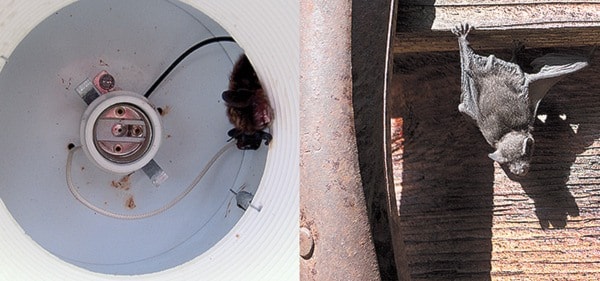Submitted
The Kootenay Community Bat Project (KCBP) has received numerous calls from residents of the area who have found a bat on the ground, had a bat fly into the house, or have a bat roosting in an unusual location.
"This is the time of year when the juvenile bats are learning to fly and they're not very good at it," said Juliet Craig, co-ordinating biologist for the KCBP. "They fly into houses or fall on the ground and have difficulty getting up again."
Juvenile bats are born as pups in late June and July. In August, they are flying on their own and learning to forage.
A bat that flies into a house can be removed by wearing leather gloves or oven mitts, or capturing it in a butterfly net or box.
If it is out of reach or cannot be found, doors and windows can be left open in the evening so the bat can fly away.
A bat roosting in a strange location, such as low on a wall or under a patio umbrella, is likely a juvenile and can be left where it is, as long as it is not at risk of coming into contact with people or pets.
"If possible, bats are best left where they are," continued Craig. "However, if a bat is found on the ground, it may need to be re-located. A bat on the ground does not necessarily mean that it is injured or sick, it may just be a juvenile that has had trouble flying."
Bats are usually not capable of propelling themselves up and off the ground.
Generally, they crawl to a wall or tree, climb up it, and are then swoop down to fly away.
A bat found on the ground can be put into a pillow case or cloth shopping bag and pinned, open end up, to a tree or wall in the shade. That way the bat can hang upside down in a protected location during the day, and fly out when it's ready in the evening.
"The most important thing is not to come into direct contact with the bat," warned Craig. "It is very rare that a bat has rabies but still possible. If a person has been at risk of being bitten or scratched by a bat then they have to either kill the bat to get it tested for rabies or have the shots themselves, neither of which is a good outcome."
The Kootenay Community Bat Project biologists recommend that anyone who has come into direct contact with a bat contact Interior Health.
For more information about bats in the Kootenays, visit www.kootenaybats.com or contact 1-855-9BC-BATS.
